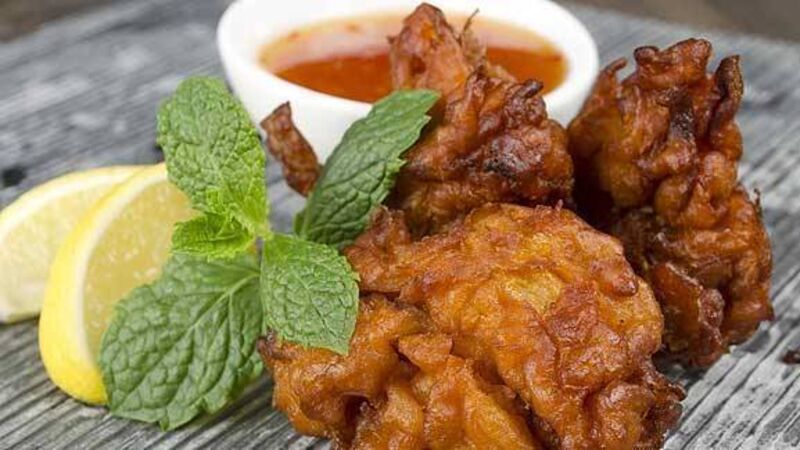Weekend food with Darina Allen

Delhi is now one of the most cosmopolitan cities in the world with a kilometre long mall, a burgeoning restaurant scene, glitzy designer shops, art galleries and pop up supper clubs.
Much of New Delhi was designed by Lutyens, a thoroughly modern metropolis where one encounters the 21st century and the medieval side-by-side. Cows still nonchalantly roam the streets, bicycles, rickshaws and tuc tucs weave in and out of the crazy traffic in a noisy melee of beeping horns.
Old Delhi is a city within a city, covering 1,500 acres and home to approximately 22 million people. It includes the biggest wholesale spice market in Asia, established in 1850. We met our guide beside the Metro station at the Chawri Bazaar. It was like being dropped into a time warp of India in the 1800s but with mobile phones and of course electricity which is transmitted through a crazy mass of tangled overhead wires. It all seems to work but is enough to render a Health and Safety inspector apoplectic! Ancient haveli with exquisite plaster work and carvings stand side by side with soulless new flat concrete structures emblazoned with signs.
Everywhere there are eye catching ads, mostly in Hindi but a few also in English. There is a frenzy of activity, the noise level is deafening — porters pulling trolleys, bearers with huge loads perched precariously on their heads, motor bikes and tuc tucs crammed with more people and/or produce than you could possibly imagine, cycle rickshaws groaning under the weight of passengers of every age and size or a load of assorted merchandise (it could be loos, cooking pots, newspapers or spices).
I’m particularly interested in the street food, the myriad of little chaat shops and street stalls and occasional restaurants that feed the 22 million people estimated to live in Old Delhi.
Much of the food is deep fried in large iron woks called karhi. It is cooked in front of you so I reckon it’s perfectly safe to eat — little vegetables and occasionally meat filled pastries, mutton katchori, samosas, pakoras, bahji, lots of little fritters, sometimes made with gram (chickpea) flour, spices, fresh coriander and turmeric. Occasionally fresh corn is added, it’s such a pity to miss out on these quintessential flavours of India.
Flat breads like roti and naan are cooked in deep clay tandoor ovens, others like poori and bhatura are deep fried in oil. Rumali roti or handkerchief bread and flaky paratha are cooked on an upturned wok shaped iron karhi over the open fire.
There are lots of peanut roasters, the whole nuts are roasted in sand and the shelled peanuts in salt once again in the multipurpose karhi. They are sold for a couple of rupees in recycled newspaper bags with a little portion of salt.
Further down the street I had one of the most delicious confections I’ve ever tasted, Daulat ki Chaat, made from the lathered up froth of boiling milk which is left outside overnight in a wide pan – the next day blobs of a saffron flavoured fluff are laid on top. The dish is lightly covered with muslin and kept over ice on the little street stalls. It is served in little dried leaf bowls with grated jaggery (cane sugar) and chopped pistachios on top, exquisitely light and delicious, only available for three or four months in the year.
Naan – Kharai are yet another speciality of Old Delhi – these sweet crumbly cookies are cooked ingeniously in a khari with another khari with hot embers on top.
I am endlessly in awe of the resourcefulness and entrepreneurial spirit of the Indian people. Another vendor was cooking diced chilli potatoes on a huge heavy concave griddle pan; they had been baked in sand for two hours first and then served with various chutneys, again completely delicious. Every couple of hundred yards there were chai wallahs boiling up milky tea or chai masala flavoured with spices and served in glasses or earthenware pots. Kulfi and the chilled sweet lassi (yoghurt drink flavoured with rosewater) was also served in earthenware beakers that were thrown into a bin and returned to the earth after use.
We also visited Standard Sweets whose specialities, apart from a selection of Indian sweets all made from milk was Bhatura, were a puffy deep fried bread with chole and aloo (potato) curry, served in a little stainless steel plates on chipped Formica tables.
It was so good. I followed this with another of their specialities, carrot halva garnished with almonds and cashew nuts. In India, it is the custom to eat with the fingers of your right hand although of course cutlery is provided in more up-market restaurants. We also ferreted out a famous Kheer (rice pudding) maker whose family have made Bade Miyan ki Kheer for the last 135 years in the same spot in Old Delhi. It’s sold warm, once again in little dry leaf bowls and is usually sold out by 2pm.
Karin’s, established in 1913, is famous for its Moghul food, it’s actually a little collection of tiny restaurants, the mutton biryani and the mutton stew are not to be missed eaten with the paper thin rumali roti, the seekh kebabs were also super delicious.
To be continued…
There are so many interpretations of onion bhajis, they are usually served hot, straight from the karhi as street food in little newspaper bags or dried leaf bowls both of which can be recycled. We serve them as a starter with the spicy tomato and chilli sauce.
Onions are a powerful source of quercetin, a plant compound that reduces inflammation. They also have powerful antiseptic and antibacterial properties.
First make the sauce. Put the chillies, pepper, tomatoes and garlic into a stainless steel saucepan with the sugar, vinegar and water. Season and simmer for 10 minutes until reduced by half.
Sieve the flour, baking powder and chilli powder into a bowl. Make a well in the centre, add the eggs, gradually add in the water, mix to make a smooth batter. Stir in the thinly sliced onions and chives. Season well with salt and freshly ground pepper.
Just before serving heat the oil to 170°C/325°F approx. Fry dessertspoons of the batter for 5 minutes approx. on each side until crisp and golden, drain on kitchen paper. Serve hot or cold with the tomato and chilli sauce.
Peel carrots and grate either by hand or in food processor. Put carrots, milk and cardamom pods in a heavy bottomed pot and bring to a boil. Turn heat to medium and cook, stirring until no liquid is left. Adjust heat, if needed. The boiling down of the milk will take half an hour or longer. Heat oil in a non-stick frying pan over medium low flame. When hot, put in carrot mixture. Stir and fry until carrots no longer have a rich reddish colour. This can take 10–15 minutes.
Add sugar, sultanas, and pistachios. Stir and fry for another two minutes. Serve warm or at room temperature. Serve the cream on the side, for those who want it.
rosewater varies in strength so be careful to add gradually and taste. this dessert can be made ahead and may be served warm or cold.
Heat ghee in pan. add soaked rice, stir for two or three minutes, add the milk and cook over low heat for an hour until rice absorbs the milk and pudding thickens. stir in almond paste, sugar, coconut, raisins, pistachios and almond slivers. cook until the sugar is dissolved. remove from the heat and stir in the ground cardamom and kewra or rosewater. cool and chill.
Preheat the oven to 160°C/320°F/Gas Mark 3
Whisk all the ingredients together, strain if necessary. Divide the mixture evenly between the bowls. Arrange in a bain-marie. Bake in the preheated oven for 10-12 minutes or until the top seems firm to the touch. Cool, cover, refrigerate and serve chilled with a compote of fruit or fresh berries.
* Date for the Diary: West Waterford Festival of Food Dungarvan – Thursday to Sunday April 10-13, next. www.waterfordfestivaloffood.com
* Galway Food Festival – April 17– 21 – Easter weekend. www.galwayfoodfestival.com
* The Business of Food with Bláthnaid Bergin — Learn the vital information needed to set up a viable, enjoyable food service business on this intensive 10-day course from 9am-5pm, Monday March 31 to Friday April 11 at the Ballymaloe Cookery School. The course format will be workshop, discussion, case studies, practical sessions and presentations. Up to 25% funding may be available for this course for Irish residents. If you would like to avail of this funding, see www.cookingisfun.ie for further details.















